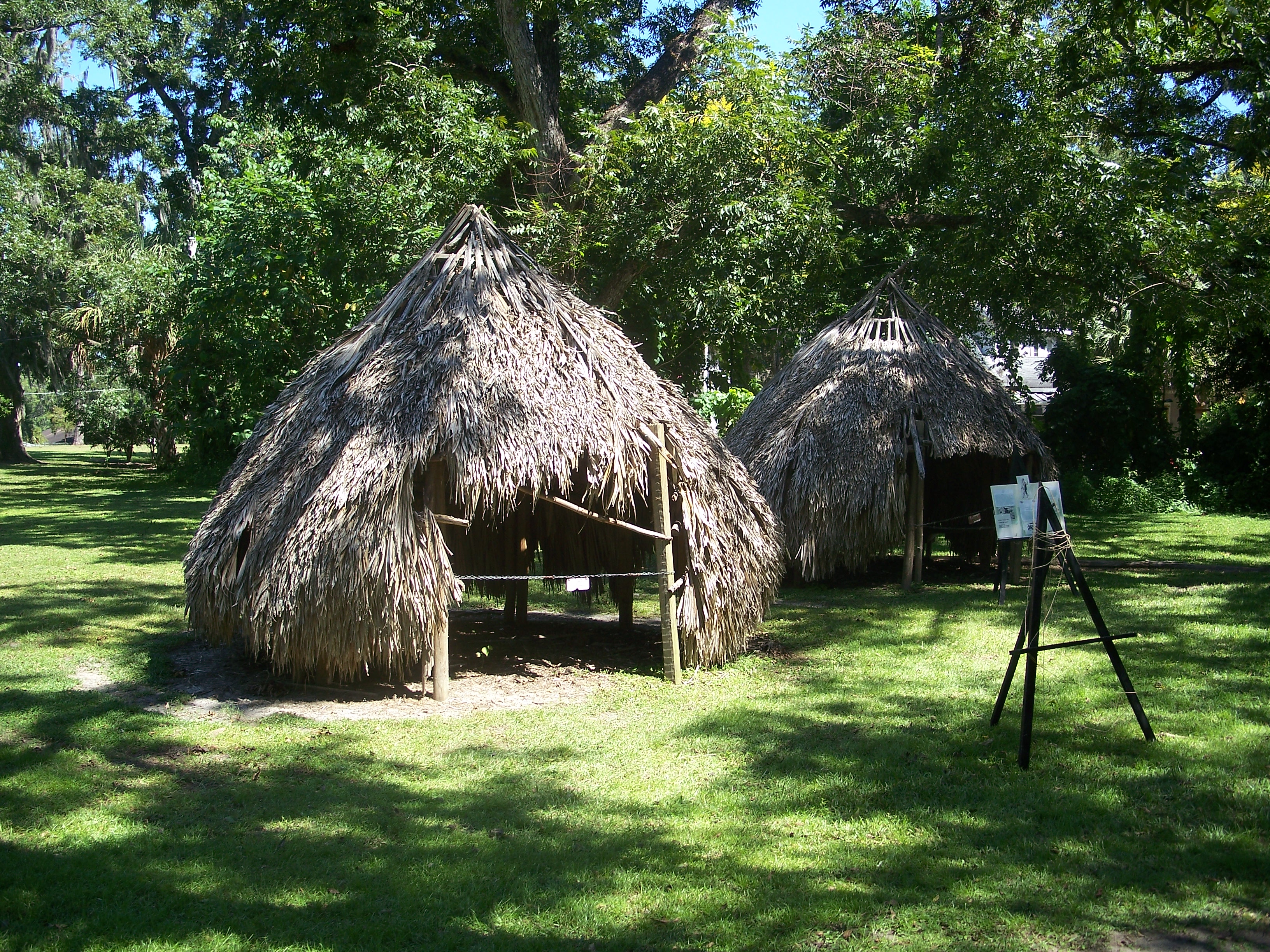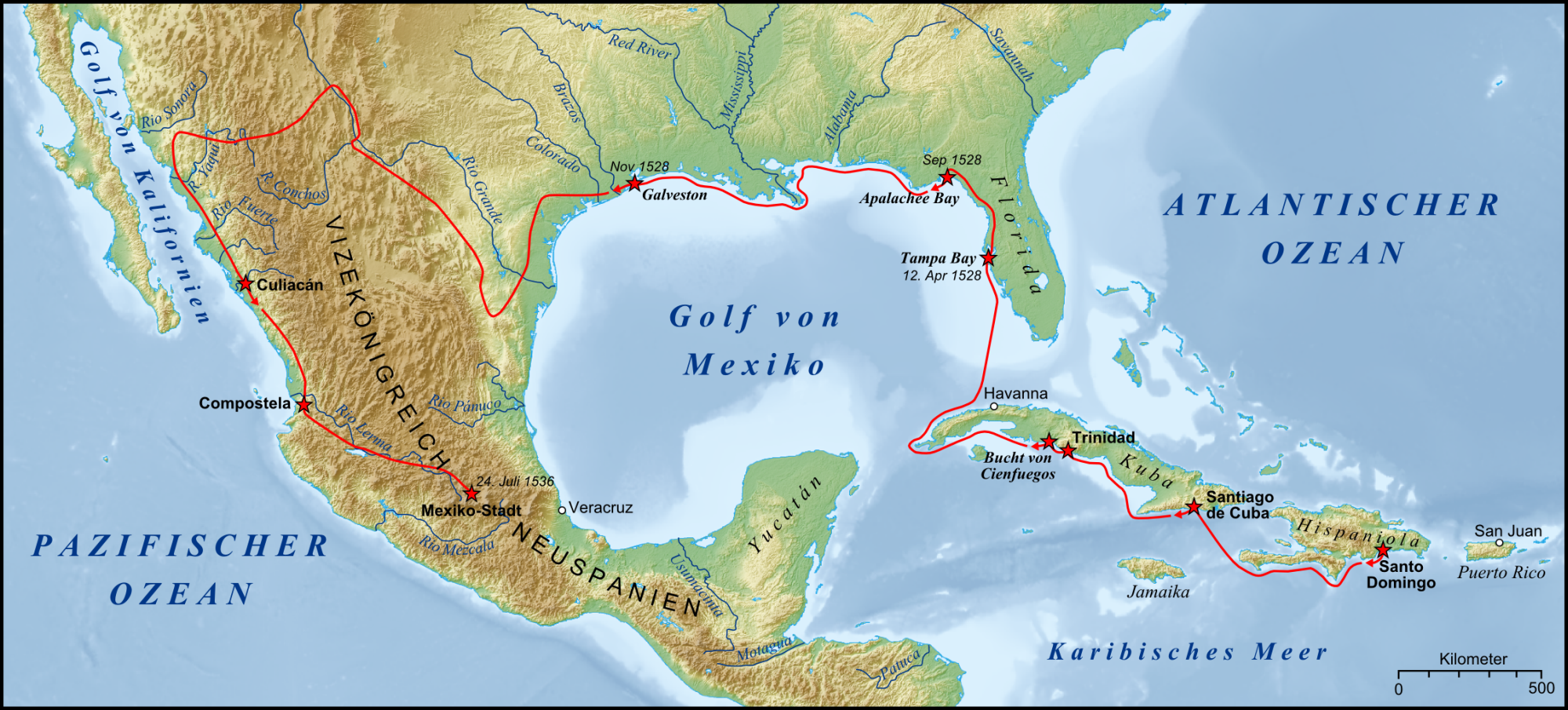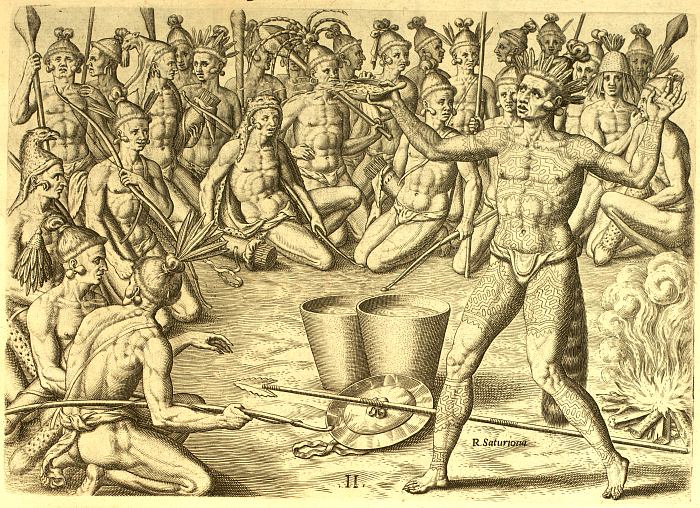|
Uzachile
The Yustaga were a Timucua people of what is now northwestern Florida during the 16th and 17th centuries. The westernmost Timucua group, they lived between the Aucilla and Suwannee Rivers in the Florida Panhandle, just east of the Apalachee people. A dominant force in regional tribal politics, they may have been organized as a loose regional chiefdom consisting of up to eight smaller local chiefdoms.Worth vol. II, p. 5. The Yustaga were closely associated with the Northern Utina people living on the other side of the Suwannee River, though they appear to have spoken a different dialect of the Timucua language, perhaps Potano. The Yustaga were among the first Timucua to encounter Europeans, as their location near the Apalachee ensured that several explorers passed through their territory looking for that group. After decades of resistance they were brought into the Spanish mission system in the 1620s. Like all Timucua groups, they experienced significant demographic decline in th ... [...More Info...] [...Related Items...] OR: [Wikipedia] [Google] [Baidu] |
Northern Utina
The Northern Utina, also known as the Timucua or simply Utina, were a Timucua people of northern Florida. They lived north of the Santa Fe River and east of the Suwannee River, and spoke a dialect of the Timucua language known as "Timucua proper". They appear to have been closely associated with the Yustaga people, who lived on the other side of the Suwannee. The Northern Utina represented one of the most powerful tribal units in the region in the 16th and 17th centuries, and may have been organized as a loose chiefdom or confederation of smaller chiefdoms. The Fig Springs archaeological site may be the remains of their principal village, Ayacuto, and the later Spanish mission of San Martín de Timucua. The Northern Utina had sporadic contact with the Europeans beginning in the first half of the 16th century. In 1539 Spanish conquistador Hernando de Soto passed through the Northern Utina region, where he captured and subsequently executed Aguacaleycuen, who may have been the ... [...More Info...] [...Related Items...] OR: [Wikipedia] [Google] [Baidu] |
Aucilla River
The Aucilla River rises in Brooks County, Georgia, USA, close to Thomasville, and passes through the Big Bend region of Florida, emptying into the Gulf of Mexico at Apalachee Bay. Some early maps called it the Ocilla River. It is long and has a drainage basin of . Tributaries include the Little Aucilla and Wacissa Rivers. In Florida, the Aucilla River forms the eastern border of Jefferson County, separating it from Madison County on the northern part, and from Taylor County to the south. During the first Spanish period in Florida the Aucilla River was the boundary between the Apalachee people and the Timucua-speaking Yustaga (or Uzachile) people. The name "Aucilla" refers to an old Timucua village. Course and features The Aucilla River flows across a karst landscape, disappearing underground and then reappearing, first at Howell Sinks near Boston, Georgia, and then approximately 30 times in the area known as the ''Aucilla River Sinks'' on the lower part of the river ... [...More Info...] [...Related Items...] OR: [Wikipedia] [Google] [Baidu] |
Florida
Florida is a state located in the Southeastern region of the United States. Florida is bordered to the west by the Gulf of Mexico, to the northwest by Alabama, to the north by Georgia, to the east by the Bahamas and Atlantic Ocean, and to the south by the Straits of Florida and Cuba; it is the only state that borders both the Gulf of Mexico and the Atlantic Ocean. Spanning , Florida ranks 22nd in area among the 50 states, and with a population of over 21 million, it is the third-most populous. The state capital is Tallahassee, and the most populous city is Jacksonville. The Miami metropolitan area, with a population of almost 6.2 million, is the most populous urban area in Florida and the ninth-most populous in the United States; other urban conurbations with over one million people are Tampa Bay, Orlando, and Jacksonville. Various Native American groups have inhabited Florida for at least 14,000 years. In 1513, Spanish explorer Juan Ponce de León became the first k ... [...More Info...] [...Related Items...] OR: [Wikipedia] [Google] [Baidu] |
Narváez Expedition
The Narváez expedition was a Spanish journey of exploration and colonization started in 1527 that intended to establish colonial settlements and garrisons in Florida. The expedition was initially led by Pánfilo de Narváez, who died in 1528. Many more people died as the expedition traveled west along the explored Gulf Coast of the present-day United States and into the American Southwest. Only four of the expedition's original members survived, reaching Mexico City in 1536. These survivors were the first known non-Native Americans to see the Mississippi River, and to cross the Gulf of Mexico and Texas. Narváez's crew initially numbered about 600, including men from Spain, Portugal, Greece, and Italy. The expedition met with disaster almost immediately. Making stops at Hispaniola and Cuba on the way to La Florida, the fleet was devastated by a hurricane, among other storms, and lost two ships. They left Cuba in February 1528. Their intended destination was the Rio de las Palma ... [...More Info...] [...Related Items...] OR: [Wikipedia] [Google] [Baidu] |
Platform Mound
Platform may refer to: Technology * Computing platform, a framework on which applications may be run * Platform game, a genre of video games * Car platform, a set of components shared by several vehicle models * Weapons platform, a system or structure that carries weapons * Web platform * Platform economy (or Platform capitalism, Platformization), a structure of internet business Physical objects and features * Carbonate platform, a type of sedimentary body * Cargo platform, a pallet used to ship cargo and heavy machines by forklift or manual lift * Diving platform, used in diving * Jumping platform, naturally occurring platforms, or platforms made in an ''ad hoc'' way for cliff jumping * Oil platform, a structure built for oil production * Platform, a component of scaffolding * Platform (geology), the part of a continental craton that is covered by sedimentary rocks * Platform (shopping center) in Culver City, Greater Los Angeles, California * Theatre platform, a standa ... [...More Info...] [...Related Items...] OR: [Wikipedia] [Google] [Baidu] |
Agua Dulce People
The Agua Dulce or Agua Fresca (Freshwater) were a Timucua people of northeastern Florida. They lived in the St. Johns River watershed north of Lake George, and spoke a dialect of the Timucua language also known as Agua Dulce. In the 1560s, Agua Dulce villages were organized into the chiefdom of Utina, one of the region's most powerful and prominent forces in the early days of European colonization in Florida. Utina had dealings with the French colony of Fort Caroline, and later allied with the Spanish of St. Augustine, who established several missions in its territory. However, the chiefdom declined significantly in the last decades of the 16th century, and the confederacy fragmented into at least three chiefdoms. The main body of the tribe withdrew south along the St. Johns River, and were known as the Agua Dulce to the Spanish. This chiefdom was largely abandoned by 1680. Additionally, a group of Christianized Agua Dulce migrated east towards St. Augustine, and became known ... [...More Info...] [...Related Items...] OR: [Wikipedia] [Google] [Baidu] |
Saturiwa
The Saturiwa were a Timucua chiefdom centered on the mouth of the St. Johns River in what is now Jacksonville, Florida. They were the largest and best attested chiefdom of the Timucua subgroup known as the Mocama, who spoke the Mocama dialect of Timucuan and lived in the coastal areas of present-day northern Florida and southeastern Georgia. They were a prominent political force in the early days of European settlement in Florida, forging friendly relations with the French Huguenot settlers at Fort Caroline in 1564 and later becoming heavily involved in the Spanish mission system. The Saturiwa are so called after their chief at the time of contact with the Europeans, ''Saturiwa''. At that time the chief's main village was located on the south bank of the St. Johns River, and he was sovereign over thirty other chiefs and their villages. Chief Saturiwa allied with the French, who built Fort Caroline in Saturiwa territory, and later aided them against the Spanish of St. Augustine ... [...More Info...] [...Related Items...] OR: [Wikipedia] [Google] [Baidu] |
Paramount Chief
A paramount chief is the English-language designation for the highest-level political leader in a regional or local polity or country administered politically with a chief-based system. This term is used occasionally in anthropological and archaeological theory to refer to the rulers of multiple chiefdoms or the rulers of exceptionally powerful chiefdoms that have subordinated others. Paramount chiefs were identified by English-speakers as existing in Native American confederacies and regional chiefdoms, such as the Powhatan Confederacy and Piscataway Native Americans encountered by European colonists in the Chesapeake Bay region of North America. During the Victoria era, paramount chief was a formal title created by British colonial administrators in the British Empire and applied in Britain's colonies in Asia and Africa. They used it as a substitute for the word "king" to ensure that only the British monarch held that title.Government Documents. Great Britain. Foreign Offi ... [...More Info...] [...Related Items...] OR: [Wikipedia] [Google] [Baidu] |
Francisco Pareja
Francisco Pareja (c. 1570 – January 25, 1628) was a Franciscan missionary in Spanish Florida, where he was primarily assigned to San Juan del Puerto. The Spaniard became a spokesman for the Franciscan community to the Spanish and colonial governments, was a leader among the missionaries, and served as ''custodio'' for the community in Florida. After the Franciscan organization was promoted to a ''provincia'' (province), Pareja was elected by his fellow missionaries as provincial in 1616. His primary historical importance was as a linguist: he developed the first writing system for the American Indian Timucua language. In 1612 he published the first book in an indigenous language of the United States, a catechism in Spanish and Timucua. From 1612 to 1627, he published eight other works in Spanish and Timucua, for the use of his teaching brothers; six of his works survive. He taught Timucuans to read and write within six months. The first church in what is now the United States wa ... [...More Info...] [...Related Items...] OR: [Wikipedia] [Google] [Baidu] |
Alachua County, Florida
Alachua County ( ) is a county in the north central portion of the U.S. state of Florida. As of the 2020 census, the population was 278,468. The county seat is Gainesville, the home of the University of Florida since 1906, when the campus opened with 106 students. Alachua County is part of the Gainesville Metropolitan Statistical Area. The county is known for its diverse culture, local music, and artisans. Much of its economy revolves around the university, which had nearly 55,000 students in the fall of 2016. History Early history The first people known to have entered the area of Alachua County were Paleo-Indians, who left artifacts in the Santa Fe River basin before 8000 BCE. Artifacts from the Archaic period (8000 - 2000 BCE) have been found at several sites in Alachua County. Permanent settlements appeared in what is now Alachua County around 100 CE, as people of the wide-ranging Deptford culture developed the local Cades Pond culture. The Cades Pond culture gave way ... [...More Info...] [...Related Items...] OR: [Wikipedia] [Google] [Baidu] |
Alachua Culture
The Alachua culture is a Late Woodland Southeast period archaeological culture in north-central Florida, dating from around 600 to 1700. It is found in an area roughly corresponding to present-day Alachua County, the northern half of Marion County and the western part of Putnam County. It was preceded by the Cades Pond culture, which inhabited approximately the same area. Origin The archeologist Jerald Milanich suggests that the people of the Alachua culture were immigrants from what is now Georgia. Early Alachua culture pottery resembled that of the Ocmulgee culture found along the Ocmulgee River. In this scenario, the Ocmulgee immigrants were either already practicing agriculture or adopted it shortly after arriving, and settled in upland areas suitable for agriculture. These areas had been little used by the Cades Pond people, who had occupied areas in wetlands. The Cades Pond culture disappeared soon after the appearance of the Alachua culture. Other archaeologists have su ... [...More Info...] [...Related Items...] OR: [Wikipedia] [Google] [Baidu] |







